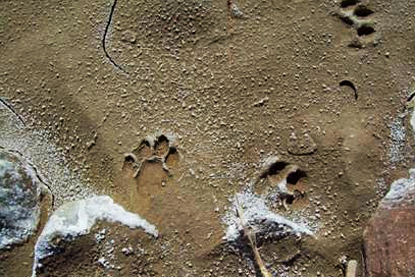http://cbs7kosa.com/news/article_d1020700-cb60-11e3-ae46-001a4bcf6878.html#.U1nrY0Fk4Qk.gmail
BIG BEND - It’s an unforgiving animal, especially if you unwillingly cross their path, we’re talking about mountain lions and the Big Bend National Park has plenty. As a safety measure the park and Sul Ross State University have teamed up to put a GPS collar on every mountain lion in the park.
Research Team Sets out to Collar all Mountain Lions at Big Bend National Park
Posted: Wednesday, April 23, 2014 10:30 pm | Updated: 11:29 am, Thu Apr 24, 2014.
Lauren Lanmon
April 23, 2014
BIG BEND - It’s an unforgiving animal, especially if you unwillingly cross their path, we’re talking about mountain lions and the Big Bend National Park has plenty. As a safety measure the park and Sul Ross State University have teamed up to put a GPS collar on every mountain lion in the park.
“We saw the need from a science standpoint to try to help the Park Service better understand how mountain lions use habitats,” said Borderlands Research Institute Director Louis Harveson.
In a park that’s bigger than the whole state of Rhode Island, you would assume a sighting of such an elusive animal like a mountain lion would be rare.
“I’m getting closer and I see that there’s something there, and I realize what it is. I stop, had my window down already and took two pictures,” said Big Bend National Park visitor Eric Collins.
For Collins, the hunt to find and photograph a mountain lion has been a 13 year long dream. “I said, mountain lion, I think I yelled it. It’s pretty exciting and pretty rare,” said Collins.
The park has had its fair share of mountain lion sighting, even attacks, that’s why they saw fit to bring in the experts from Sul Ross’s Borderlands Research Institute. “There’s definitely a method to the madness lions tend to move through draws and across ridge tops,” said researcher Price Rumbelow.
“We hike maybe six miles up to 20 miles on some of the longer days. We have probably gone 500 miles since we started,” said researcher Bert Geary.
With traps set, and fancy tracking equipment, this crew definitely has it down to a ‘T’ on where these fearless cats travel. After every capture each cat gets a GPS collar so not only the group, but the park can alert hikers on what trails are safe.
“They are very capable, they are very efficient killers and hunters. We are in Mountain Lion Country, you just need to be mindful,” said Harveson.
Officials with the park estimate there to be a couple dozen mountain lions roaming the grounds, but the research team has only been successful in collaring two.
------------------------------------------------------------------------------------------------------------------
- Mountain Lions in Big Bend

Mountain lion on the Boot Canyon Trail.
NPS/Big Bend National Park

Mountain lion tracks near the Banta Shut-In. Note the lack of claw marks. Bear and coyote tracks have claw imprints in front of each toe pad.
Steven Schauer
Big Bend is Mountain Lion Country! If Big Bend had a symbol, it might well be the mountain lion—the embodiment of freedom and wildness . Solitary and secretive, this mighty creature is the unquestioned lord of its natural world. As one of Big Bend’s top predators, Felis concolor —"cat all of one color"— is vital in maintaining the park’s biological diversity. In the delicate habitats of the Chihuahuan Desert, mountain lions help balance herbivores (animals that eat plants) and vegetation. Research shows that cats help keep deer and javelina within the limits of their food resources. Without lions, the complex network of life in Big Bend would certainly be changed. Encountering a mountain lion, however, can lead to conflicts in maintaining the balance between natural processes and visitor enjoyment and safety. Since the 1950s , there have been more than 2,700 sightings of mountain lions by visitors. Each year, over 150 lion sightings are reported by park visitors. While over 90 percent of these sightings were along park roadways, encounters along trails have also occurred. Since 1984, four lion and human encounters have resulted in attacks on people. In both cases, those attacked recovered from their injuries and the aggressive lions were killed, preventing them from playing out their important natural roles. The more we know about lions, and the less we seek an encounter, the better able we will be to make life easier for them and for us. How much do you really know about this powerful and wild cat? Mountain lions live throughout the park, including the Chisos Mountains where they prefer to use trails . Your chances of encountering an aggressive lion are remote. What can you do to minimize the consequences of an encounter? Avoid hiking alone or at dusk or dawn. Watch children closely; never let them run ahead of you. Like all predators, the mountain lion’s role is a part of the health and welfare of the entire ecosystem. Research and further human understanding of the cat’s habits pave the way for conservation efforts in its behalf. As we discover more about the lion, we fear it less and appreciate it more. For many visitors, just seeing a track—or just knowing lions are out there—will be reward enough. |


No comments:
Post a Comment